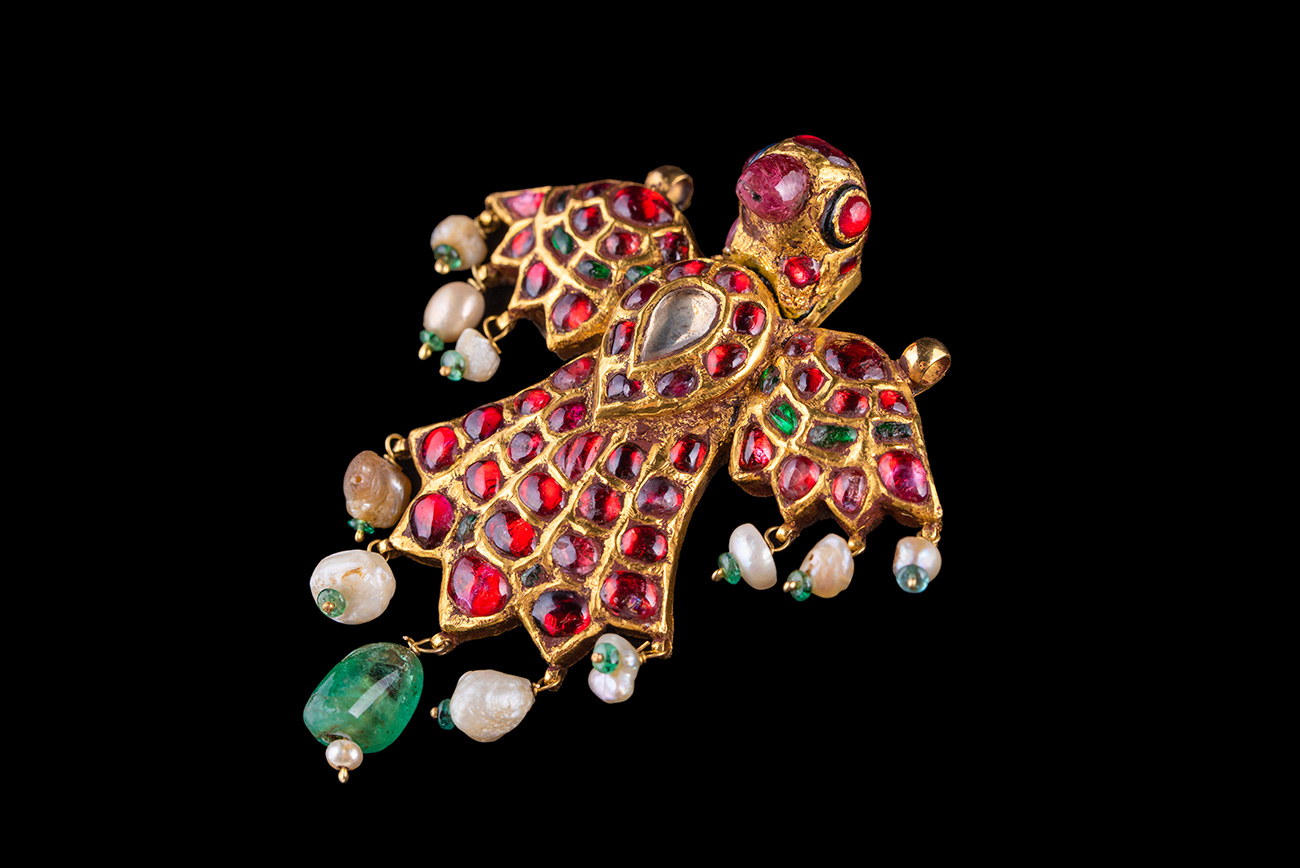


This work is a bird motif with wings spread and a beak facing the viewer, covered in rubies. The bird has ruby eyes, a ruby crown, and a ruby beak. Natural pearls and Colombian emeralds hang under the wings, and a heart of diamond is surrounded by rubies. The gem-setting technique comes from the unique Indian "kundan" technique. The kundan technique involves setting the stones in an inlay rather than in the "claw" or "rake" settings like that of European jewelry, and uses a gold or silver foil base of the highest purity to accentuate the brilliance of the diamonds and other precious stones. Another characteristic of this technique is that it preserves the original size of the stone rather than cutting it into a symmetrical and uniform shape.
The same type of bird pendant appears in a portrait of the Udaipur prince, Amin Singh II, once exhibited at the V&A. During the Mughal Empire and its successor states, bird motifs were associated with kingship. The Persians believed that those who sat under the wings of the Huma Bird were destined to be extraordinary, to become rulers, or to have the greatest happiness in the world. This is why birds were often found in the decoration of thrones, such as the custom-made thrones of Shah Jahan and Tipu Sultan, which were adorned with jewels and decorated with bird motifs. This can also be understood as one of the manifestations of bird worship.
From the shape of the crown and heart, it is also possible that this divine bird is the Garuda of Hindu mythology and legend. The giant bird in Indian mythology, Garuda, is god Vishnu's personal mount. Garuda's image is often half human, half bird, or full bird. Because of Buddhist influence in East Asia, in Central Asia, and in South Siberia, Garuda also exists in local myths of these areas.